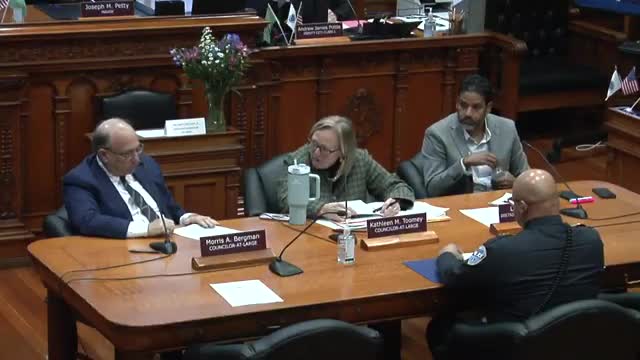Worcester committee requests report comparing manually operated drones and "drone-as-first-responder" programs
October 22, 2025 | Worcester City, Worcester County, Massachusetts
This article was created by AI summarizing key points discussed. AI makes mistakes, so for full details and context, please refer to the video of the full meeting. Please report any errors so we can fix them. Report an error »

The Worcester City Public Safety Committee asked staff to prepare a chairman's order and report comparing different municipal uses of unmanned aircraft systems and how Worcester's program compares to similar cities in New England.
The request followed questions from councilors about cost-per-use comparisons and operational differences between manually piloted drones and automated “drone-as-first-responder” systems. A councilor noted, “I don't know if 1 of those questions was the cost per use. I think that's a fair question,” and asked whether staff could report back with comparisons to cities such as Springfield, Hartford and Manchester.
Madam Chair directed staff to return with a report. Committee staff described operational differences: manually operated drones are flown within visual line of sight by on-site pilots and are typically used for planned missions and scene support; drone-as-first-responder systems are remotely operated, can be launched automatically on a 9-1-1 trigger, operate beyond visual line of sight, and can arrive at scenes in about two minutes. Committee members highlighted training and licensing requirements for manual pilots and noted Springfield and Boston as nearby jurisdictions testing automated first-responder programs.
Committee members and staff agreed the report should include cost comparisons accounting for capital costs, prorated equipment life, overtime and training, plus a survey of similar-sized New England cities' drone inventories and program designs. The chair indicated a chairman's order would formalize the request.
The committee accepted and filed the communication related to the drone discussion.
The request followed questions from councilors about cost-per-use comparisons and operational differences between manually piloted drones and automated “drone-as-first-responder” systems. A councilor noted, “I don't know if 1 of those questions was the cost per use. I think that's a fair question,” and asked whether staff could report back with comparisons to cities such as Springfield, Hartford and Manchester.
Madam Chair directed staff to return with a report. Committee staff described operational differences: manually operated drones are flown within visual line of sight by on-site pilots and are typically used for planned missions and scene support; drone-as-first-responder systems are remotely operated, can be launched automatically on a 9-1-1 trigger, operate beyond visual line of sight, and can arrive at scenes in about two minutes. Committee members highlighted training and licensing requirements for manual pilots and noted Springfield and Boston as nearby jurisdictions testing automated first-responder programs.
Committee members and staff agreed the report should include cost comparisons accounting for capital costs, prorated equipment life, overtime and training, plus a survey of similar-sized New England cities' drone inventories and program designs. The chair indicated a chairman's order would formalize the request.
The committee accepted and filed the communication related to the drone discussion.
View full meeting
This article is based on a recent meeting—watch the full video and explore the complete transcript for deeper insights into the discussion.
View full meeting
